SUSTAINABILITY REPORT 2025

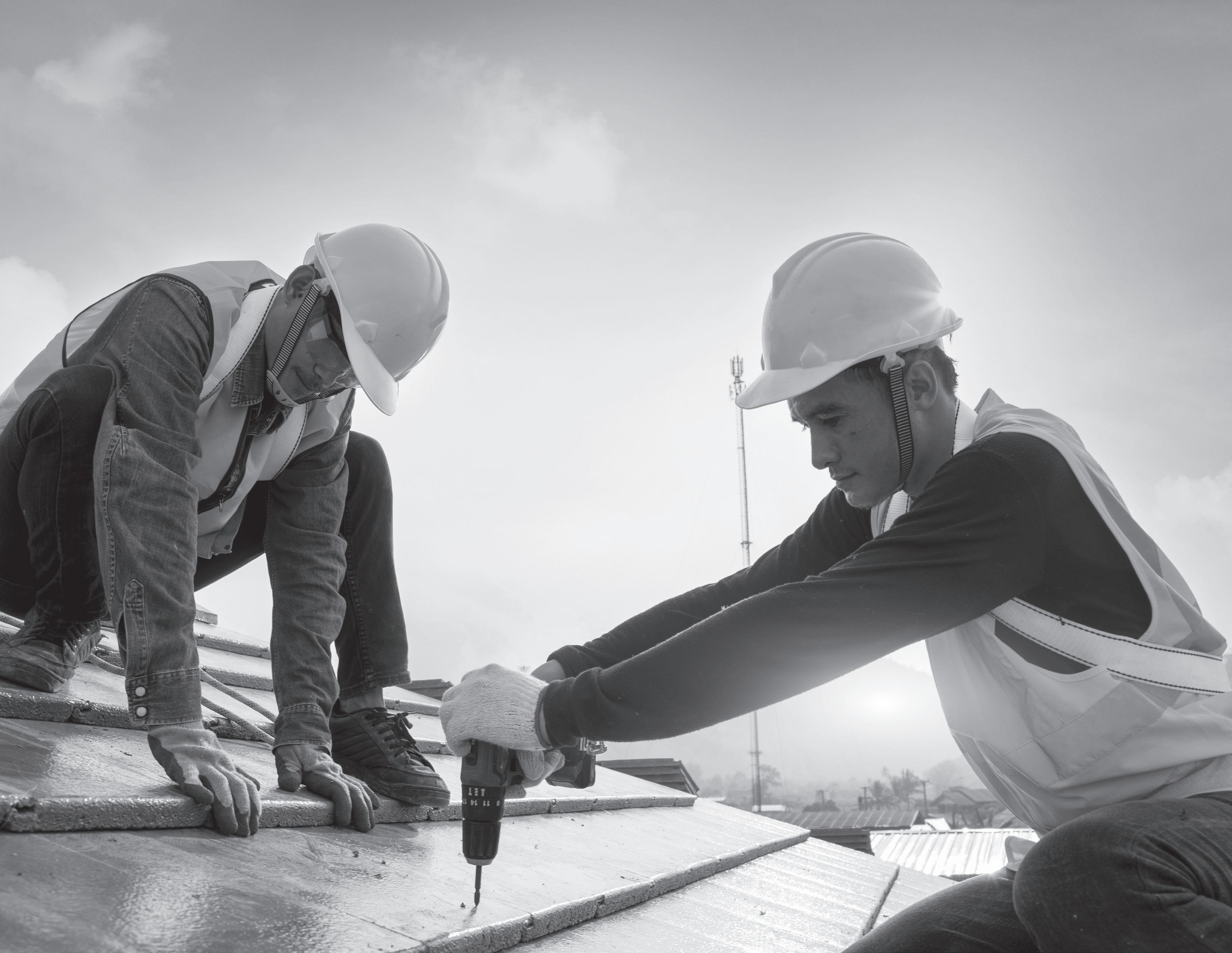



Since 1986 AMERISAFE has been driven by an ethos of responsibility and care for workers across the country. Our unique focus on workers’ compensation for hazardous industries has allowed us to prioritize and commit to safety above all else – “Safe Above All” – and we are proud of the leading practices and standards we have built as a responsible carrier.
This Report provides transparency about our approach to responsible business for the issues, risks, and opportunities that we face.
AMERISAFE’s employees are among the best in the industry – people who care about what they do and why they do it. To make our workforce even stronger, we remain committed to enhancing our strategies related to employee engagement; supporting our employees’ volunteer efforts and drive to impact their own communities; health and wellness; and talent attraction and recruitment.
AMERISAFE is defined by its corporate culture of helping to provide security for
employers and their injured employees through the insurance coverage and services we offer, by paying claims to injured workers promptly and fairly during their time of need, by encouraging and supporting our employees to be actively engaged in the communities in which they live, investing in our employees and minimizing the impact we have on the environment. AMERISAFE manages its business with the goal of responsibly delivering long-term value to all of our stakeholders by adhering to the philosophy that good stewardship is good business.
From our headquarters in Southwest Louisiana to our field operations across 27 states, our long-term success depends on our relationships with all stakeholders: policyholders, agents, employees, injured workers, investors, regulators, and the communities in which we operate. I believe this Report will share our story about how we strive to do the right thing through superior service and stewardship every day.

G. JANELLE FROST President and Chief Executive Officer
AMERISAFE, Inc. (AMERISAFE or the Company) is an insurance holding company incorporated in Texas. We began operations in 1986 by focusing on workers’ compensation insurance for logging contractors in the southeast United States. Beginning in 1994, we expanded our focus to include the other hazardous industries we serve today.
We are a specialty provider of workers’ compensation insurance focused on small to mid-sized employers engaged in hazardous industries, principally construction, trucking, logging and lumber, agriculture, manufacturing, telecommunications, and maritime. We have gained significant experience underwriting the complex workers’ compensation exposures inherent in these industries. We provide coverage to employers under state and federal workers’ compensation laws. These laws prescribe wage replacement and medical care benefits that employers are obligated to provide to their employees who are injured in the course and scope of their employment.
Our workers’ compensation insurance policies provide benefits to injured employees for, among other things, temporary or permanent disability, death and medical and hospital expenses. The benefits payable and the duration of those benefits are set by state or federal law. The benefits vary by jurisdiction, the nature and severity of the injury, and the wages of the employee. The employer, who is the policyholder, pays the premiums for coverage.
We employ a proactive, disciplined approach to underwriting employers and providing comprehensive services intended to lessen the overall incidence and cost of workplace injuries.
We provide safety services at employers’ workplaces as a vital component of our underwriting process and to promote safer workplaces. We utilize intensive claims management practices that we believe permit us to reduce the overall cost of our claims. In addition, we believe that our premium audit services help ensure that our policyholders pay the appropriate premiums required under the terms of their policies and enable us to monitor payroll patterns that cause underwriting, safety, or fraud concerns.
At AMERISAFE, we center our company culture along five core values: Consistency, Service, Frugality, Ownership, and Focus.
We strive for consistency and stability in our business processes, our risk appetite, our behaviors and attitudes, and our results.
Service is delivering on the promises established in our insurance policies, supporting the work activities of our fellow employees, and donating time, talent, and resources to our employees and communities.
Frugality is consciously and wisely managing our costs.
Ownership is accepting responsibility for assigned duties, going beyond those desired results, and being accountable for all outcomes.
Focus is our strategy of workers’ compensation insurance for small to mid-sized employers engaged in high hazard industries.
As of December 31, 2024, the carrying value of our investment portfolio, including cash and cash equivalents, was $832.8 million. As of December 31, 2024, municipal bonds with maturities greater than one year made up 62% of our investment portfolio, including cash and cash equivalents. We generally seek to limit our holdings in equity securities to the lesser of 10% of the investment portfolio or 30% of shareholders’ equity, on a fair value basis.
Our Board of Directors (the Board) has established an investment policy governing our investments, which is reviewed at least annually. The principal objectives of our investment portfolio are to preserve capital and surplus and to maintain appropriate liquidity for corporate requirements. We periodically review our investment portfolio with the Board’s Risk Committee for compliance with the policy. Our investment portfolio is managed internally.
We are heavily regulated, and our investment policy statement must comply with applicable laws. Our Board understands the importance of sustainability factors in our investment policy and works with our management-level investment committee to assess and incorporate relevant considerations into our investment policy.
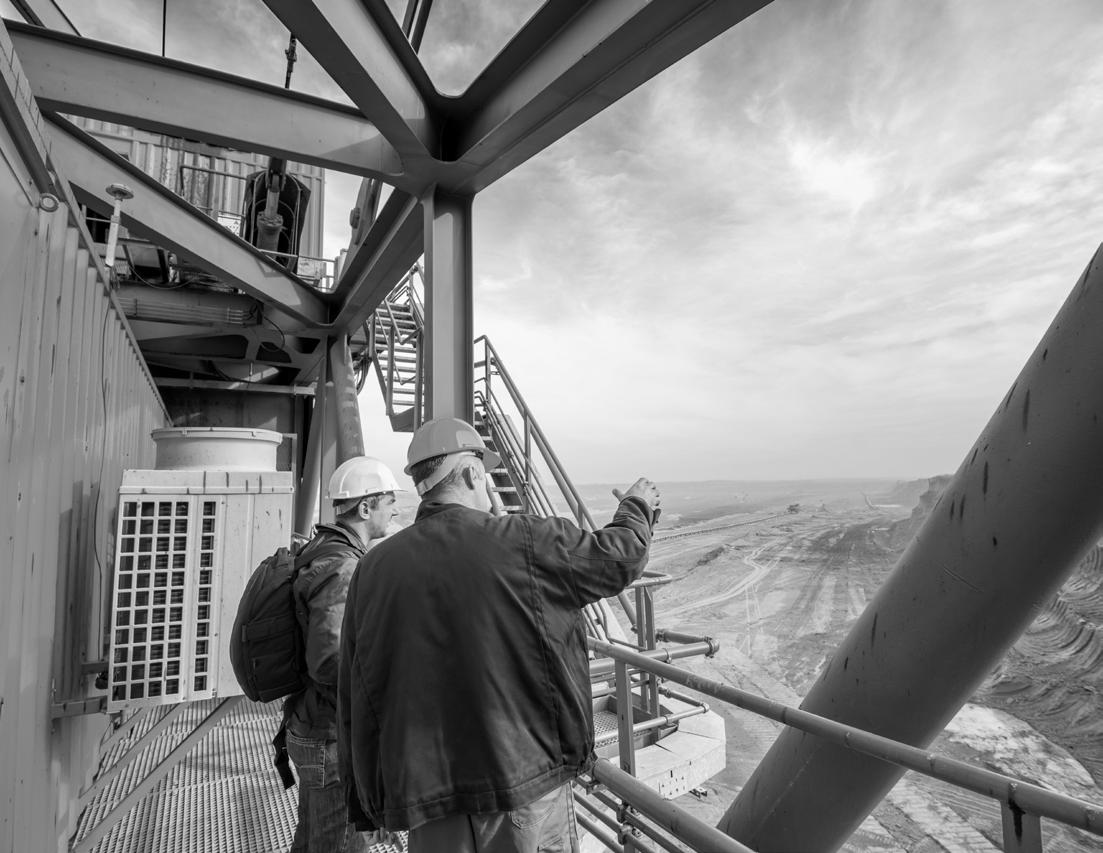
AMERISAFE’s Board believes that one of its primary responsibilities is to promote a corporate culture of accountability, responsibility, and ethical conduct. The Board presently consists of seven non-employee directors and one employee director. The Board is divided into three classes, with each class serving three-year terms. The term
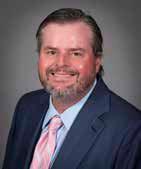

of one class expires at each annual meeting of shareholders. As part of AMERISAFE’s corporate governance guidelines, the Board has established a policy requiring a majority of the members of the Board to be independent. Currently, except G. Janelle Frost who currently serves as our CEO, all of our directors are independent.
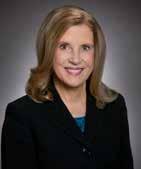
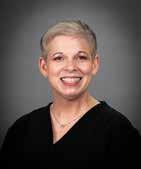




Consistent with strong governance principles, AMERISAFE has adopted:

A director resignation policy that requires any director nominee who receives a greater number of votes “withheld” or “against” his or her election than votes “for” his or her election to tender his or her resignation as a director.
A clawback policy regarding the recovery of incentive compensation in the event of a restatement of the Company’s financial statements filed with the SEC.
A policy regarding Rule 10b5-1 trading plans requiring, among other things, that each plan be approved by the Company’s Chief Compliance Officer and provided to the Chair of the Nominating and Corporate Governance Committee (NCG Committee) for review prior to approval; each plan must provide for a mandatory cooling off period following adoption or modification.
An insider trading policy prohibiting directors, officers, and employees from trading in our securities while in possession of material nonpublic information or providing such information to other persons who may trade on the basis of that information. Policies prohibiting our directors, executive officers and employees from hedging or pledging our common stock.
A policy regarding related party transaction oversight and approval.
AMERISAFE’s Board continues to evaluate and consider a broad range of considerations for any director nominees. At this time, we are not considering expanding the current size of the Board.
Our Nominating and Corporate Governance Committee is primarily responsible for oversight of the Company’s policies and disclosures related to environmental, safety, corporate social responsibility, and corporate governance matters and coordinates with the Risk Committee with respect to such risks, as appropriate. Our Compensation
Committee is responsible for oversight of human capital matters.
Our Board’s Risk Committee identifies direct and indirect risks to AMERISAFE’s business operations. These risks may be strategic, operational, or physical. The mechanism by which AMERISAFE identifies, analyzes, and addresses risks passes though certain risk management structures
embedded in the company’s operations and culture. Risks are subsequently ranked based on their urgency to AMERISAFE as a company.

Identified risks are filtered through our Enterprise Risk Management (ERM) program which proactively assesses, monitors, and responds to risks to our business. The ERM program is headed by our Chief Risk Officer and is overseen by the Board’s Risk Committee (which includes all members of the Board). The Risk Committee is responsible for the ERM’s performance and execution. AMERISAFE also added a managementlevel risk committee to our ERM architecture. The management-level risk committee is responsible for identifying emerging risks resulting from both internal and external changes that may threaten the profitability or solvency of the company.
All potential strategic, underwriting, reserve, investment, and operational risks to our business are collated into a risk universe. The risk universe is then arranged by management and executives into a 3 Tier system ranking business risks by their respective urgency:
– Tier 1 Risks are regularly reported at the Board level.
– Tier 2 Risks are addressed by senior management via the ERM system.
– Tier 3 Risks are monitored by management and support staff.
The Board will occasionally review Tier 2 and Tier 3 risks. On an annual basis, management will review our risk universe.
Under the ERM, identified risks will be addressed by a range of risk management responses. These include the following:
– Board Risk and Audit Committees
– Management Underwriting Committee
– Management Investment Committee
– Management Disclosure Committee
– Management Safety Committee
– Risk and Information Services department
– Corporate Insurance program
– Internal Audit function
– Sarbanes Oxley control framework
– Actuarial analyses
– Catastrophe modeling
– Financial and Capital modeling
– Business Continuity and IT Disaster Preparedness planning
– Detailed budgeting and expense management
– In-house Human Resources, Regulatory and Legal departments
– Annual Risk Universe review
– Management reporting of key operational performance indicators
AMERISAFE employs an active Information Security Plan which provides a comprehensive overview of the company’s security program relating to controls to protect the confidentiality, integrity, and availability of AMERISAFE resources.
Administrative, physical, and technical controls are integrated together to provide a layered approach in protecting Company assets and reducing total risk.
The application of these controls allows us to ensure compliance strategically and tactically with laws and regulations, integrate security responsibilities throughout the organization, and create a maturity model to allow for continual improvement while following leading IT security standards in our industry. The principal responsibility for information security falls under the Vice President of Information Security. Accountability for information security falls under the Vice President of IT, with the supervision of the Company’s Chief Risk Officer.
IT Incident Response Plan
IT Risk Management Plan
Business Continuity Plan (BCP)
PHYSICAL CONTROLS
Centralized electronic card access control system
Uninterruptable power supply units
Environmental controls
TECHNICAL CONTROLS
Firewalls
Signature and behavior-based monitoring
Intrusion detection systems
Encryption and backups
Encryption and Mobile
Application Management
Our corporate governance guidelines, code of business conduct and ethics, committee charters, director resignation policy, and certain other governance policies are available on AMERISAFE’s website at www.amerisafe.com. These policies are reviewed on an annual basis.
– Corporate Governance Guidelines
– Code of Business Conduct and Ethics
– Confidentiality Policy
– Conflict of Interest Policy
– Corporate Disclosure Policy
– Insider Trading Policy
– Hedging Policy
– Pledging Policy
– Sexual Harassment and General Harassment Policies
– Discrimination Policy
– Equal Employment Opportunity Policy
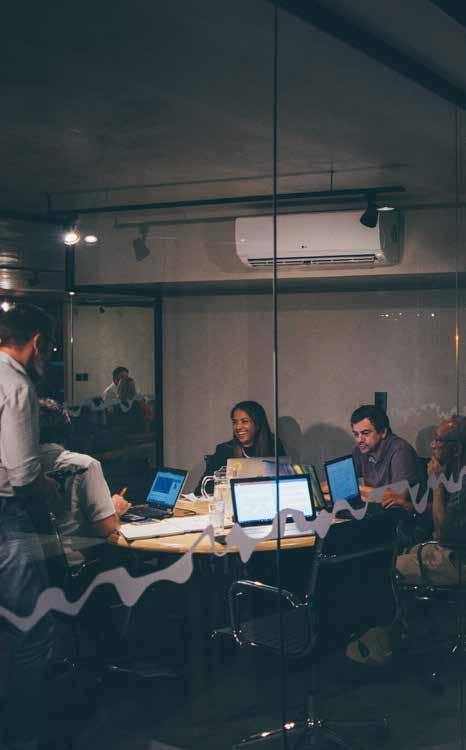
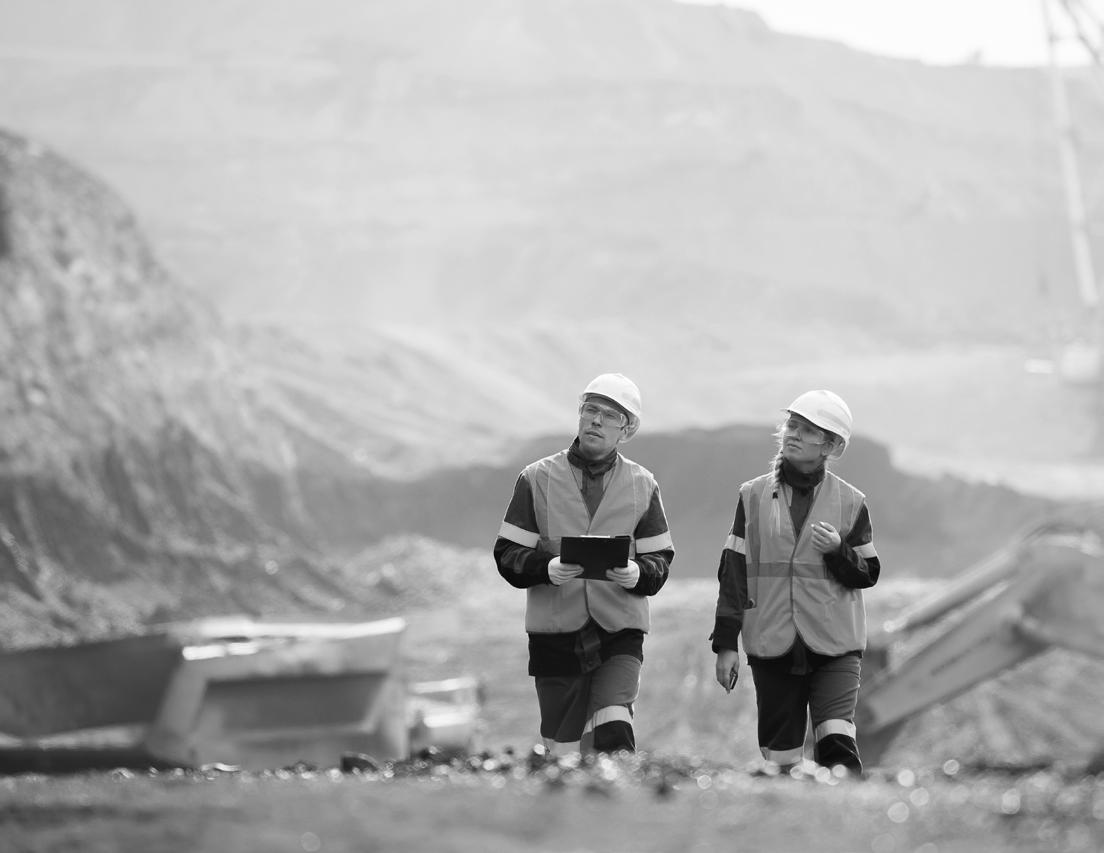
We are is headquartered in a 60,000 sq. ft. office space in DeRidder, Louisiana. Additionally, we maintain a 3,200 sq. ft. warehouse facility in DeRidder as well as 3,500 sq. ft. of office space in Omaha, Nebraska that is leased to our insurance subsidiaries, American Interstate Insurance Company (AIIC) and Silver Oak Casualty, Inc. (SOCI). As a specialty provider of workers’ compensation insurance, we recognize that our environmental impact from the spaces that we operate out of may have a minimal footprint, but a footprint regardless. To reduce our environmental footprint, we have identified best practices to utilize resources efficiently and operate effectively at our facilities. Some examples of our best practices in place include:
– Nearly 100% electronic records, reducing reliance on paper and ink
– Improved systems for monitoring air conditioning and heating
– Recycling options for paper, cardboard, and batteries
– Replacement of fluorescent and incandescent lighting with LED lighting
– Donating or recycling used IT equipment
In 2024, AMERISAFE upgraded 7 HVAC units to higher efficiency units and replaced approximately 295 lights with LED.

As a monoline workers’ compensation insurer, we do not have the same exposure to weather-related events as property and casualty insurers. Currently, our Enterprise Risk Management (ERM) program, led by our Chief Risk Officer, assesses climate-related risks in terms of the potential impact on the industries of our policyholders and their employees.
However, given our focus on high-risk industries, we recognize the need to consider certain geographic metrics in assessing our exposure to climate-related factors as they
affect the risks we insure. In addition, we recognize we have some operational risk in light of our Louisiana headquarters and have an internal Disaster Recovery Plan in place to mitigate this risk. This plan is designed with the goal to enable AMERISAFE to continue to work efficiently in the event of a climate-related extreme weather event.
Our process for identifying climate-related risks and opportunities mirrors our processes for identifying other risks in our ERM program.

AMERISAFE recognizes there is a transition to a low carbon economy currently underway. This shift is producing green jobs in various industries creating potential opportunity for AMERISAFE. For example, the work required to install solar panels or wind turbines can be similar to installing a roof or working on cell phone towers, however these types of jobs would be categorized under different class codes. Further, the agriculture and timber industries are among the hazardous industries that we target. These industries actively participate in the planting and management of carbon-capturing forests and fields, and AMERISAFE is proud to help support those industries.
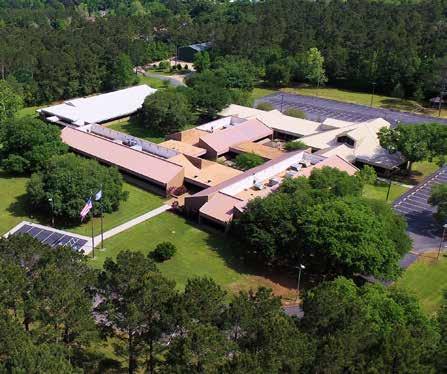
AMERISAFE is headquartered in DeRidder, Louisiana, which is located in a rural area of Southwest Louisiana in Beauregard Parish. As a whole, Beauregard Parish is heavily forested, containing approximately 1,160 square miles of pine forests. Because of the vast natural resources of the parish, citizens’ (including our employees) air and water quality are generally good.
AMERISAFE’s home office is located on approximately a 48 acre campus, of which about 35 acres is forested. Our employees are able to enjoy the natural beauty of our campus through use of walking trails and copious outdoor areas. By being strategically located in rural Southwest Louisiana, AMERISAFE is able to enjoy a cleaner and more natural environment compared to that of many larger cities, while also being located near many of the high-hazard industries we serve.
AMERISAFE’s home office location is no stranger to its share of natural disasters. Within the past 10 years, our region has been impacted by hurricanes and forest fires. For this reason, AMERISAFE has business continuity plans in place, including Internet and IT system redundancies and the ability to operate on generator power. Because of these plans, AMERISAFE believes it is prepared to serve customers without significant disruption, even during natural disaster situations.
AMERISAFE’s Safety Committee meets twice a year to discuss events relevant to AMERISAFE’s safety plan, lessons learned from past experiences, and how its plan can be improved in the future.
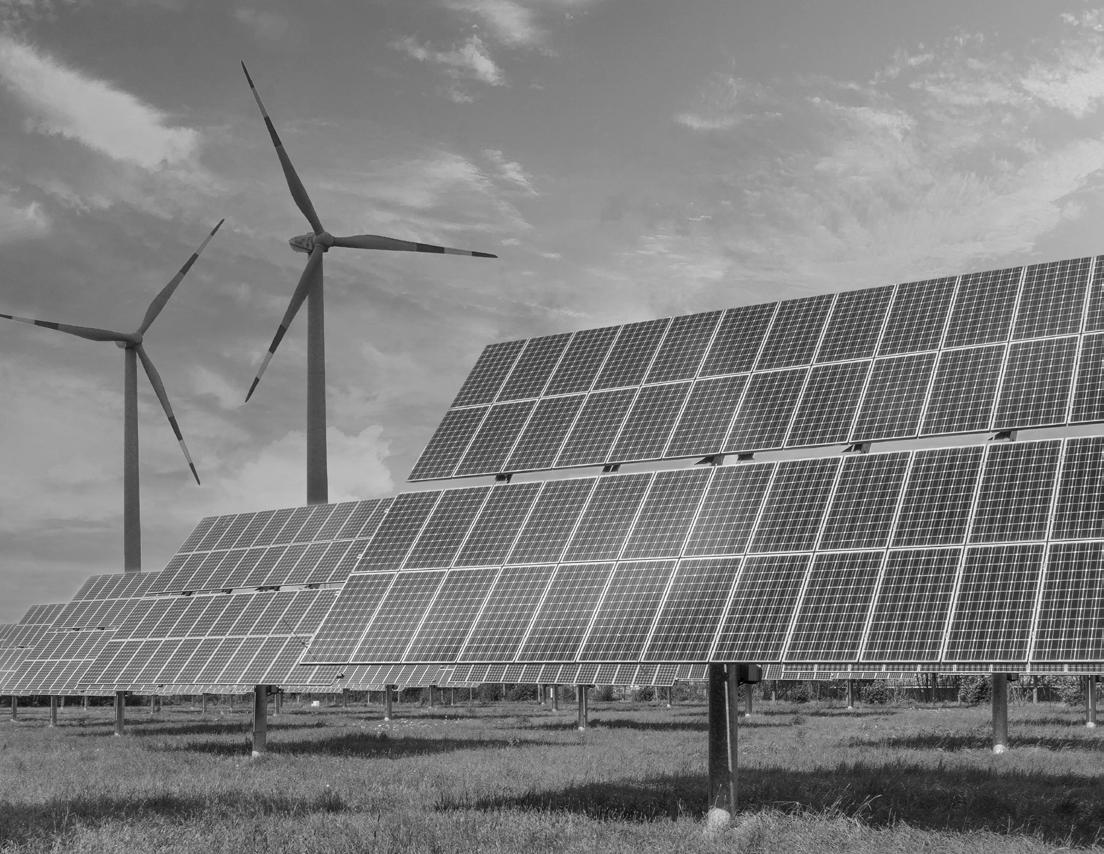

A large part of being a responsible insurer is reflected in the service we provide to our policyholders, as providing insurance has dual functions as a means of protection and a transfer of risk. Our approach to serving policyholders must be grounded in a people-first mindset.
Our customer base is largely comprised of relatively small to mid-size policyholders who may not have their own safety departments. Our field safety professionals (FSPs) conduct interviews with potential policyholders before relaying their feedback to our underwriters. FSPs will ask prospective policyholders about the safety training their employees are given. That information helps the underwriter assess risk for a given company. Often, we provide safety services to our insureds as a function of our underwriting analysis to ensure we are insuring policyholders that prioritize safety in
their businesses. Our policyholders also get access to safety training materials to assist them with maintaining a safe working environment. If this reduces claims, it is a win-win for us and our policyholders. This advice can overlap with environmental concerns as well; for example, air quality and ventilation are key health and safety concerns for us when we conduct an inspection with a prospective policyholder.
We do not delegate underwriting to agencies, marketers, or any third-party providers. We hire underwriters and train them to be highly disciplined when quoting and agreeing to provide coverage to business. We believe our 39-year history gives us an advantage when it comes to insuring high risk industries and providing specialized service to our policyholders.

Even with the most comprehensive safety services, accidents happen. At AMERISAFE, we believe that all injured workers deserve to be treated with respect. Our mission is to handle all claims with concentrated, immediate, and highly personable management and care. Regardless of the nature of injury, AMERISAFE will be there for the policyholder and injured worker.
Our face-to-face approach requires that our Field Case Managers (FCMs) live in proximity to our policyholders, allowing them to react quickly when the need arises. To further ensure the best experience possible for the policyholder and injured worker, our FCMs are supported by Nurse Case Managers and other knowledgeable resources so the FCM can be dedicated to the needs of the injured worker.
With an average of 44 claims per FCM, our FCMs are able to have more direct contact with injured workers. In most cases, only one dedicated FCM will be the point of contact, guiding injured workers through medical treatment, rehabilitation, return to work, and maximum recovery. We understand expedient recovery and early return to work is the optimum outcome for all parties.
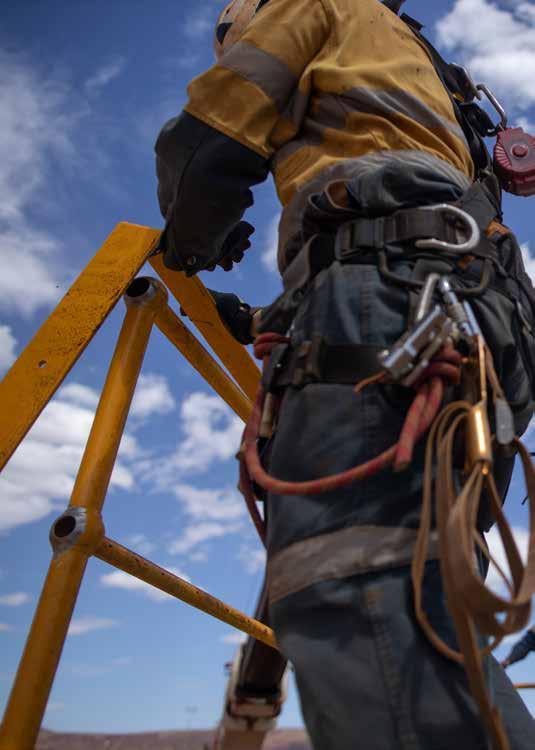
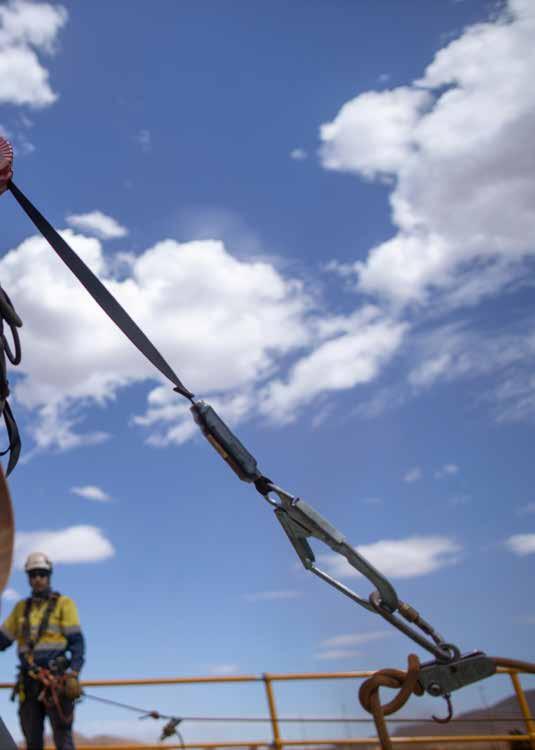
Protecting the people we serve is what matters most. That’s why we hire Field Safety Professionals (FSPs) with first-hand experience in the industries we underwrite. We provide safety services at employers’ workplaces as a vital component of our underwriting process and to promote safer workplaces. In most cases, our underwriters request a safety visit by one of our own FSPs before quoting a potential policyholder.
With FSPs on the ground living where policyholders operate, we can help workers be “Safe Above All” by providing a clear observation of safety practices and offering verbal recommendations even before a business owner requests a policy from us.
Through our safety practices, we aim to help our policyholders prevent traumatic and debilitating injuries to workers. This has been a core principle of ours since our founding and one of the areas where we believe we have sustained positive impact on workers and communities.
In addition to our knowledgeable staff, we also offer a wide range of resources through our online education and training center. This allows our policyholders and their workers to receive additional information regardless of the time or place. We offer a variety of safety programs tailored to fit the industries we service. Additionally, we offer online video training free of charge to our policyholders. Below is a list of topics covered by our online video trainings.
– Safety Policy Statement and Statement of Responsibilities
– Accident Investigation
– Arborist Safety
– Bloodborne Pathogens
– CDL Operators Cell Phone Policy
– Cell Phone Safety
– Confined Space Entry
– Considerations for Drug and Alcohol Policy
– Considerations for a Return-toWork Program
– Electrical
– Fall Protection
– Fire Prevention and Emergency Action
– Forklift Safety
– Hand and Power Tools
– Hazard Communication
– Hearing Conservation
– Housekeeping
– Job Safety Analysis
– Lifting Guide
– Lockout/Tagout
– Machine Guarding
– Management Commitment Statement
– Material Hosts
– Mobile Cranes
– Overhead Cranes
– Personnel-Lifting Devices
– Personal Protective Equipment
– Respirable Crystalline Silica
– Respiratory Protection
– Safety-Health Training and Orientation (New Hires)
– Safety Inspection
– Safety Meeting Report
– Scaffolding
– Sling
– Slip, Trip, and Fall
– Stairways and Ladders
– Trenching
– Truck Mounted Cranes
– Tube and Coupler Scaffolds
– Vehicle Safety
– Welding
– Workplace Security (Violence)
One of the best performance indicators for our safety department and safety initiatives is the growing number of our policyholders reaching multi-year milestones with no claims (i.e., a perfect safety record).
At year-end 2024, we were proud to recognize the following numbers of policyholders reaching these important milestones:
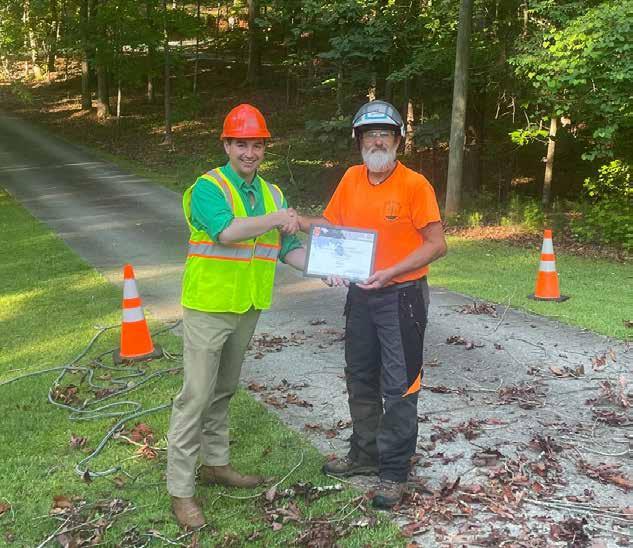
345 FIVE YEARS
POLICYHOLDERS
105 TEN YEARS
POLICYHOLDERS
31 FIFTEEN YEARS
POLICYHOLDERS
5 20 YEARS
POLICYHOLDERS
Throughout our 39-year history, the retention, growth and development of our employees has been critical to our success. In order to continue to deliver on our mission of providing quality insurance services to our policyholders, it is crucial that we continue to attract and retain talented employees that are aligned with our mission.

We provide employees time off for annual wellness exams, reimbursements of health club memberships, confidential counseling services, and access to an onsite flu vaccination clinic. Additionally, employees who complete an annual wellness exam and are enrolled in AMERISAFE’s health insurance receive a monetary incentive prior to the end of the calendar year.
Each quarter, AMERISAFE hosts wellness luncheons for its employees. Topics discussed at these luncheons include nutrition, preventative health care, fitness strategies, and CPR training. AMERISAFE also hosts an annual health fair where employees are able to interact with representatives from local health care providers and life and health insurance representatives.
Our safety committee and the AMERISAFE PEERS team work to advance a safe and supportive workplace. Our safety committee meets to evaluate safety of our workplace, address safety concerns, and raise the awareness for safe working habits. Our PEERS team promotes a supportive workplace culture by building peer-to-peer relationships and celebrating the victories of our workforce.
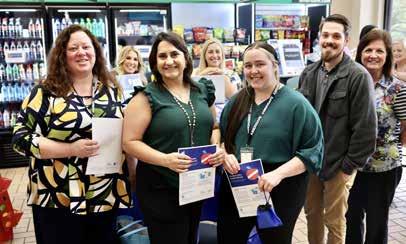
A happy and engaged workforce is essential to delivering on our promises to policyholders and other stakeholders. We are proud of the people who come to work at AMERISAFE who are inspired to do the right thing and help people stay protected and cared for.
We provide employees with a 401K plan with company matching contributions, health insurance plans, dental, vision, and other employee benefits. We have also established an endowment to provide scholarships to dependents of our employees and members of the community of our home office, recognizing the importance of educating future generations. Since 2016, we have maintained a partnership with the Baton Rouge Area Foundation to provide taxfree assistance, through an employee assistance fund, to employees who have experienced a catastrophic event. In addition to funding provided by us, this fund also allows employees to make one-time or recurring monetary donations to assist their fellow employees either by direct payment to the foundation, or through payroll deductions.
Since 2022, we have conducted a regular employee engagement survey, during which we get to hear from employees about their experience at AMERISAFE. In our most recent March 2025 survey, we saw an increase in both participation and favorable engagement from employees. The favorable engagement rate increased from 81% in 2023 to 83% in 2025. The 2025 survey revealed that AMERISAFE employees feel encouraged to collaborate with their team, have the training needed to do their jobs, and that AMERISAFE is taking action to be socially responsible.
AMERISAFE, like many other companies, faced an increase in attrition post-pandemic. The Company was presented with macro-challenges such as the Great Resignation, fully remote work options and increasing retirement rates. In 2024, AMERISAFE experienced a decrease in attrition, potentially signaling some normalizing in the employment market. AMERISAFE continues to evaluate workforce needs to positively impact employee retention and engagement.
We invest in the professional development of our employees. This includes various insurance certification and licensing programs and other professional development education, training, and certifications. We also work with our employees to provide training in leadership development, professional development, project management skills, and interpersonal skills development.
Approximately half of our employees work from our headquarters in rural Southwest Louisiana. For some career fields, recruiting the right candidates in our region can be a challenge in a tight labor market. To overcome these challenges, some of the talent pipeline development strategies we have implemented include the following:
– Broadening our relationships with local high schools, community colleges, and universities through career fairs and community outreach
– Periodically evaluating our compensation and benefits to ensure we are competitive in the markets we serve.
– Working with recruiting organizations that focus on attracting talent with unique differences, bringing varied backgrounds and perspectives to the workforce.
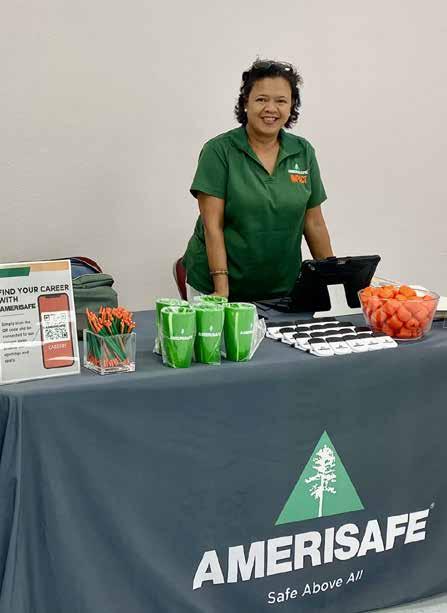
Maria Faul is set up at JRTC and Fort Johnson for the Army Community Service Employment Readiness Program.
The unique differences of each individual are representative of our exceptional workforce, where service to each other is the foundation of service to our customers. We embrace and support these differences as we strive to promote inclusion through our values and behaviors. With the support of our Board, we are focused on enhancing our culture that embraces and supports the unique differences of our workforce, while we execute strategies to support progress in leveraging the strengths and opportunities of workforce differences.
AMERISAFE provides equal employment opportunities to all individuals. We do not consider a person’s race,
sex, religion, color, national origin, sexual orientation or gender identification, disability, medical or genetic information, pregnancy, military status, age, or any other factor prohibited by law in making hiring, promotion, training, assignment, compensation, discipline, benefits, employment, and termination decisions. As of December 31, 2024, approximately 62% of our workforce was female and 38% male.
We actively engage with and support local communities through numerous charitable and social organizations in the communities in which we operate. We believe that this commitment helps in our efforts to attract and retain employees. To encourage a culture of giving back to the communities in which we operate, all of our employees may take advantage of paid time off for volunteer activities.
TOTAL PAID HOURS
AMERISAFE EMPLOYEES
SPENT VOLUNTEERING
In 2024, AMERISAFE’s Impact Committee continued to help the Company focus our charitable giving and corporate volunteering efforts. The Impact Committee is comprised of employees at various levels of the Company, different departments, and locations. It is responsible for selection of recipients of monetary donations over the course of each calendar year, as well as coordinating volunteer opportunities for employees to engage in within the communities we serve. AMERISAFE, through the Impact Committee, donated to 80 charitable organizations in 2024.
The AMERISAFE Family Scholarship is presented to a graduating senior that is a child, stepchild, grandchild, or legal dependent of a full-time AMERISAFE employee. The scholarship is funded by AMERISAFE and awarded through the Community Foundation of Southwest Louisiana each year. Selection for the family scholarship is completed through the Foundation, with no input from any officer or employee of AMERISAFE.
TOTAL STUDENTS SUPPORTED BY AMERISAFE’S SCHOLARSHIPS
Each year, the AMERISAFE Community Scholarship Fund awards a scholarship to a graduating high school senior in Beauregard or Vernon Parish who is pursuing higher education at either a two-year or four-year institution. The scholarship is funded by AMERISAFE and awarded through the Community Foundation of Southwest Louisiana each year. Selection for the community scholarship is completed through the Foundation, with no input from any officer or employee of AMERISAFE.

AMERISAFE Legal Counsel Kyle Townsley and IT Operations Manager Berry Thompson read with students at Pine Wood Elementary School during the school’s “Fall Into a Good Book” event.

AMERISAFE was proud to support the Humane Society of West Louisiana in its efforts to provide a safe haven and care for area animals that are abused, abandoned or neglected.
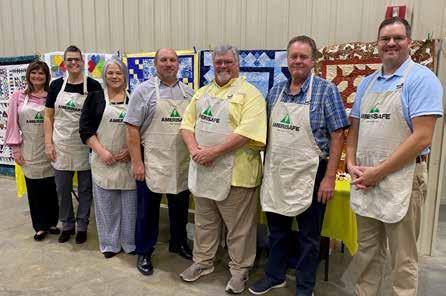
AMERISAFE volunteers served at the Beauregard Council on Aging Senior Fall Luncheon. More than 200 area senior citizens attended the event.
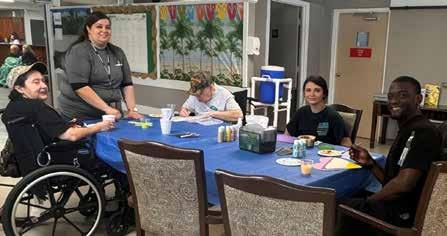
AMERISAFE employees volunteer at the DeRidder Retirement & Rehabilitation Center, doing arts & crafts with the residents.
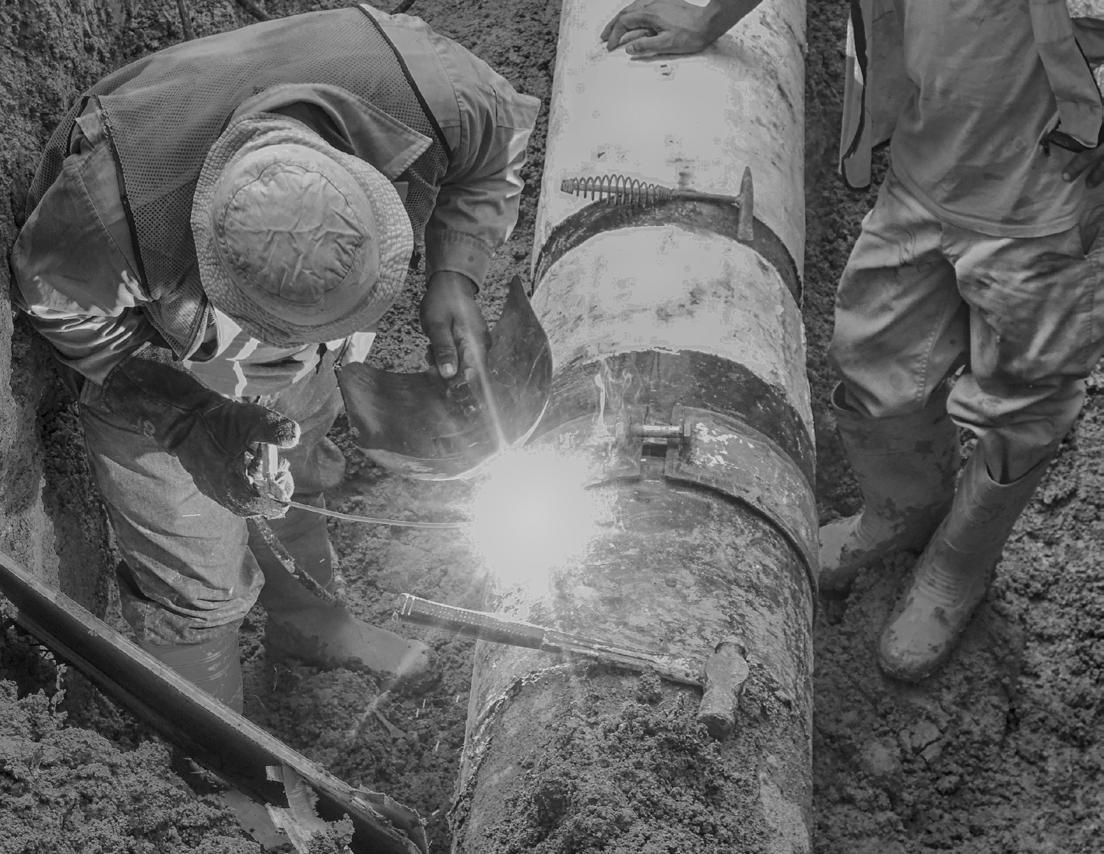
In this Report, we reference sustainability reporting frameworks and standards, including the Sustainability Accounting Standards Board (SASB) and the former Task Force on Climate-related Financial Disclosures (TCFD). The quantitative metrics included in this Report cover our operations for the 2024 fiscal year, and qualitative information includes initiatives through the first quarter of 2025. Some of the data, statistics and metrics included in this Report are estimates, are not prepared in accordance with U.S. GAAP, continue to evolve and may be based on assumptions believed to be reasonable at the time of preparation, but should not be considered guarantees and are subject to future revision. This Report may include data and statistics from third parties. We believe these sources are reliable but have not independently verified this information.
Forward-looking statements are all statements other than statements of historical facts. You should not place undue reliance on these statements as they address matters that involve risks and uncertainties. These forward-looking statements include statements that reflect the current views of senior management with respect to our performance and future events with respect to our business and the insurance industry in general.
Statements that include the words “aim,” “expect,” “intend,” “plan,” “believe,” “project,” “forecast,” “estimate,” “may,” “should,” “could,” “to be,” “anticipate” and similar statements of a future or forward-looking nature identify forward-looking statements. You are encouraged to review the disclosures included in AMERISAFE’s filings with the Securities and Exchange Commission, including the factors described under “Risk Factors” in Part I, Item 1A of AMERISAFE’s Annual Report on Form 10-K for the year ended December 31, 2024. AMERISAFE cautions you not to place undue reliance on the forward-looking statements in this Report. AMERISAFE does not undertake any obligation to publicly update or revise any forward-looking statements to reflect future events, information or circumstances that arise after the date of this Report.
While certain matters discussed in this Report may be significant and relevant to our investors, any significance should not be read as rising to the level of materiality for purposes of complying with U.S. federal securities laws and regulations or the disclosure requirements of the SEC.
The SASB Standards guide the disclosure of financially material sustainability information by companies to their investors. Available for 77 industries, the SASB Standards identify the subset of environmental, social, and governance (ESG) issues most relevant to financial performance in each industry. To support the information needs of investors and other stakeholders, AMERISAFE has provided the following information based on the SASB Standards for the Insurance industry.
Total amount of monetary losses as a result of legal proceedings associated with marketing and communication of insurance product-related information to new and returning customers
AMERISAFE was not involved in any legal proceedings of this nature.
In 2024, our complaints-to-claims ratio was 1 to 3,767. We have an extremely low number of complaints and corresponding complaints-to-claims ratio is due to our high touch model and focus on customer experience. Our Legal and Regulatory Departments work closely with regulatory agencies and the corresponding customer to resolve complaints promptly.
One reason for our low number of complaints is because we prioritize high quality customer service. Compared to other carriers, we have more interaction with our policyholders through personal contact with employers and claimants. We provide immediate service to claimants, contacting injured workers within 48 hours of the assigned indemnity claim and help the injured worker and/or family understand the claims process, available benefits, and treatment options. We also work to maintain relationships with policyholders through workplace safety visits during each policy cycle.
As of December 31, 2024, we averaged 44 indemnity claims per field case manager, which we believe is significantly less than the industry average. Our low number of claims caseloads allow us to dedicate more time to injured workers and employers. This helps promote consistency of outcomes and expectations.
Our policy renewal rate on voluntary business that we elected to quote for renewal was 94.2% in 2024, 94.1% in 2023, and 93.8% in 2022. These renewal rates are disclosed in our public filings with the SEC and on the Policyholders page of our website. This renewal rate is calculated as the number of policyholders who chose to renew with us after we offered them a renewal quote. This methodology is not currently reported by geography.
Our insurance product is sold and marketed through partner independent agents and wholesale brokers. As such, we have limited direct communication with prospective policyholders prior to issuing a policy. The agencies and brokers we work with directly inform customers about the policy coverage available. Therefore, we work closely with those agencies and brokers to ensure they are able to transparently provide appropriate education and information on workers’ compensation, our safety services approach, our premium audit process, and our claims process. These agencies and brokers spend extensive time communicating with customers and gathering information about customers’ needs.
Once we receive a customer’s information, and if the customer meets our underwriting criteria, our underwriters provide a quote and payment plan options. If we need additional information after the policy decision has been made, we communicate with the agents and brokers to obtain additional information from policyholders. All policies are audited after they are issued. We directly contact any non-paying policyholders to avoid issuing notices of cancellation. We also have training manuals for our employees and agents that discuss our processes around transparency and frequency of communication.
FN-IN 410A.1 Total invested assets, by industry and asset class
AMERISAFE’s total invested assets, as of December 31, 2024, was $832.8 million USD, and its investment portfolio allocation was as follows:
FN-IN 410A.2
Description of approach to incorporation of environmental, social, and governance (ESG) factors in investment management processes and strategies
We are heavily regulated, and our investment policy statement must comply with applicable laws in each state in which we operate. As such, the majority of our investments typically are held until maturity. In addition, our approach is to be more conservative than many state laws requires. For instance, our investment policy states we do not invest in derivatives, even though some state laws allow it.
Our management-level investment committee consists of our Chief Executive Officer, Chief Financial Officer, Chief Risk Officer, Chief Administrative Officer/Compliance Officer, and Chief Underwriting Officer. Our Board is actively aware of the value in integrating ESG into our investment policy and will work with our management level investment committee to evaluate and develop any such considerations into its existing investment policy. We also are discussing potential social-oriented metrics that could be used in our screening process for municipal bonds.
FN-IN 410B.1
Net premiums written related to energy efficiency and low carbon technology
This metric is not directly applicable to AMERISAFE, as it is a monoline workers’ compensation insurance provider.
FN-IN 410B.2
Discussion of products or product features that incentivize health, safety or environmentally responsible actions or behaviors.
AMERISAFE offers Evolved Safety, a service that provides 24/7 safety training to policyholders and their employees. These training offerings are available on a standard non-fee basis with additional trainings available for an additional fee. In addition, during 2024, 92.5% of new voluntary business policyholders were visited prior to offering a premium quote, which includes an assessment of the employers’ safety practices. AMERISAFE’s safety team also conducts periodic workplace visits, assists in recommending enhanced safety management programs, and conducts post-accident reviews.
FN-IN 450A.1
Probable Maximum Loss (PML) of insured products from weather-related natural catastrophes
As a monoline workers’ compensation insurance company, we do not have the same exposure to weatherrelated catastrophe losses as property insurers; accordingly, such catastrophe events are not a significant input for our modeling purposes. For example, we do not consider hurricanes to present significant risk to our business because insured employees in the lines of business we underwrite typically are not working during a hurricane or other extreme weather-related events.
While we typically insure smaller, more mobile work forces that work at different locations and are less likely to be aggregated in one location, we are exploring whether to take additional geographic metrics into consideration when assessing climate-related risks. For example, when we model PMLs for concentration of payroll in cities where we have policyholders, we may consider the city’s earthquake exposure (in addition to other exposures such as terrorism or industrial accidents). As earthquakes are natural disasters that can have significant impacts on our policyholders, we are mindful of policies that are in fault zones.
Potential weather-related events and other natural catastrophes that may impact our reinsurance program are modeled. We purchase two programs for reinsurance: 1) a working layer, providing coverage for individual claims pertaining to catastrophic claims (e.g., permanently disabled), and 2) catastrophe insurance for mass casualty events.
FN-IN 450A.2
Total amount of monetary losses attributable to insurance payouts from (1) modeled natural catastrophes and (2) non- modeled natural catastrophes, by type of event and geographic segment (net and gross of reinsurance)
We complete catastrophe modeling annually to identify the PML associated with natural catastrophe events. Our policyholders have not had any losses directly associated with a natural catastrophe event; therefore, we have $0 in losses attributable to insurance payouts from natural catastrophe events.
FN-IN 450A.3
Description of approach to incorporation of environmental risks into (1) the underwriting process for individual contracts and (2) the management of firm-level risks and capital adequacy
AMERISAFE considers the climate-related considerations relevant to its policyholders’ location during its underwriting process and analyzes the potential impact to capital as a result of possible natural catastrophe events.
For the reasons discussed elsewhere herein, we do not believe environmental risks present a material company level risk to our business at this time. As noted above, we are in the early stages of considering potential environmental risk exposures of certain industries for which we provide workers’ compensation coverage.
FN-IN 550A.1
FN-IN 550A.2
Exposure to derivative instruments by category: (1) total potential exposure to noncentrally cleared derivatives, (2) total fair value of acceptable collateral posted with the Central Clearinghouse, and (3) total potential exposure to centrally cleared derivatives
We do not invest in derivatives. As such, we have no exposure to any derivative instruments of any category.
Total fair value of securities lending collateral assets
None
FN-IN 550A.3
Description of approach to managing capital and liquidity-related risks associated with systemic non-insurance activities
Our investment policy is conservative in accordance with applicable insurance laws in the states in which we write business. As such, our capital is primarily invested in long-term municipal and corporate bonds. We substantially exceed minimum risk based capital requirements established by state insurance regulators. We do not participate in any systemic non-insurance activities.
FN-IN 000.A Number of policies in force, by segment: (1) property and casualty, (2) life, (3) assumed reinsurance.
As of December 31, 2024, we had more than 9,300 voluntary business policyholders. Our ten largest voluntary business policyholders accounted for 2.3% of in-force premiums.
Workers’ compensation insurance is not property insurance. Our insurance provides for wage replacement and medical care benefits to the employees of our policyholders. As a monoline insurer, workers’ compensation is our only line of business. We do not write life insurance or reinsurance.

Describe the board’s oversight of climate-related risks and opportunities
The former Financial Stability Board Task Force on Climate-related Financial Disclosures (TCFD) was a market-driven initiative, set up to develop a set of recommendations for voluntary and consistent climate-related financial risk disclosures in mainstream filings. The work and recommendations of the TCFD helps firms understand what financial markets want from disclosure in order to measure and respond to climate change risks and encourage firms to align their disclosures with investors’ needs.
Our Nominating and Corporate Governance Committee is primarily responsible for oversight of risks and opportunities presented by ESG matters, including climaterelated risks, and coordinates with the Risk Committee with respect to such risks, as appropriate. AMERISAFE’s Risk Committee is comprised of all members of the Board and is responsible for assessing risks and challenges the Company is facing. While the Board generally considers climate impacts to be indirect to the Company’s operations and business strategy, the Company recognizes that climate affects the industries in which its policyholders operate and may indirectly affect its business and operations.
Describe the management’s role in assessing and managing climate-related risks and opportunities
Currently, our Enterprise Risk Management (ERM) program, led by our Chief Risk Officer, assesses climate-related risks in terms of the potential impact on the industries of our policyholders. These industries include construction, trucking, logging and lumber, manufacturing, agriculture, maritime, telecommunications and other industries.
Climate-related risks and opportunities identified over the short, medium, and long term
Impact of climate-related risks and opportunities on the organization’s businesses, strategy, and financial planning
Compared to other types of insurance, workers’ compensation insurance is less affected by natural disasters. We do not provide coverage for property risks, and the workers for the industries that we insure are unlikely to be working during catastrophic weatherrelated events.
In terms of our business strategy, we are exploring whether to use additional geographybased modeling for assessing how weather events and other physical climate risks may impact our policyholders and their employees at one time, such as snowstorms or floods which may increase in frequency, intensity, and duration over time due to climate change. We are still evaluating ways of quantifying the indirect impacts of such natural disasters and other climate risks on our business and those of our policyholders.
For our operations, we recognize we are exposed to hurricane risk due to our headquarters being located in DeRidder, Louisiana. As part of the annual report we file with the State of California which highlights our organization’s exposure to climate change risks, we report our office’s distance from the Gulf of America along with other climate risk factors.
To mitigate the climate-related risks on our business, we have in place an internal Disaster Recovery Plan. The Disaster Recovery Plan aims to ensure the efficient and effective restoration of our Information Technology (IT) platform following a disaster. This plan establishes protocols and critical business continuity measures to guide our IT personnel and employees before, during, and after a disaster. Our Disaster Recovery Plan allows our business operations to continue functioning in critical areas during and after a disaster and has been proven during multiple natural disaster events that have impacted our main DeRidder, Louisiana location.
We recognize that climate-related risks may also provide an opportunity for us to share resources that can innovate worker safety and education around climate risks as they affect our policyholders’ industries and may explore such opportunities with our safety training providers and partners in the future.
Resilience of strategy using a 2C or lower scenario
Because we only provide workers’ compensation insurance, we have no property-related exposure, and we have not yet conducted climate-related scenario analysis.
Processes for identifying and assessing climate-related risks
Processes for managing climaterelated risks
The Nominating and Corporate Governance Committee has responsibility for oversight of ESG risks, including those indirectly raised by climate-related issues, and coordinates with the Risk Committee on such risks, as appropriate. The Risk Committee has responsibility for the identification of current and emerging risks broadly across organizational and functional boundaries.
When strategic, operational, and physical risks are identified, including those indirectly impacted by climate-related issues, risk mitigation plans are developed as part of our ERM program. The Chief Risk Officer is primarily responsible for the administration of the ERM program and supports periodic risk management training to ensure both employees and the Board are appropriately informed of their responsibilities and have plans to manage our top risks. Because of the nature of our business, climate change is not one of our top ten risks at this time.
Integration of risk processes into overall risk management
We maintain a risk universe of strategic, operational, and physical risks that are assessed on an annual basis to determine what the most significant risks are to us, what controls are in place to address these risks, and what their potential impacts are. Our department heads are responsible for executing on plans throughout the year to address or mitigate our key, identified risks.
Metrics used to assess climaterelated risks and opportunities
We are exploring operational and geography-based metrics for managing climaterelated risks and opportunities. In terms of operational metrics, we track our main office’s electricity usage, fuel usage, and printed paper usage by department, with a goal of using less paper, fuel, and electricity overall as a company. As a result of our efforts, we have reduced overall paper usage since we started measuring in 2018, upgraded 7 HVAC units to higher efficiency units, and replaced approximately 295 lights with LED.
In terms of broader climate-related risk exposures from our policyholders, we are evaluating whether geography-based metrics can help us assess the risks of weather-related events to our policyholders. We currently account for earthquakes in assessing our PMLs and may expand this to other weather-related perils.
Scope 1 and 2 GHG emissions
We currently do not track our Scope 1 and 2 emissions.
Targets used to assess climaterelated risks and opportunities
We do not currently have established targets in place. We may do so in the future as we continue to assess the potential risks that climate change may directly or indirectly pose to our business and operations.
We have established other operational sustainability targets, such as a goal towards reducing paper usage. To achieve this, we have instituted a recycling initiative to track how much paper is being printed by each department (which is in turn converted into a trees and emissions consumed metric to raise awareness), ensure that recycling bins for paper are clearly marked and available in all breakrooms, and that our waste hauler comes to recycle all of our shredded paper. We are also investigating ways to make our business operations use less paper but are somewhat limited by regulatory barriers such as state guidelines requiring policyholders to affirmatively choose to not receive information in paper form. We have also undertaken efforts to reduce electric usage, including the installation of LED lights and more efficient HVAC systems.
